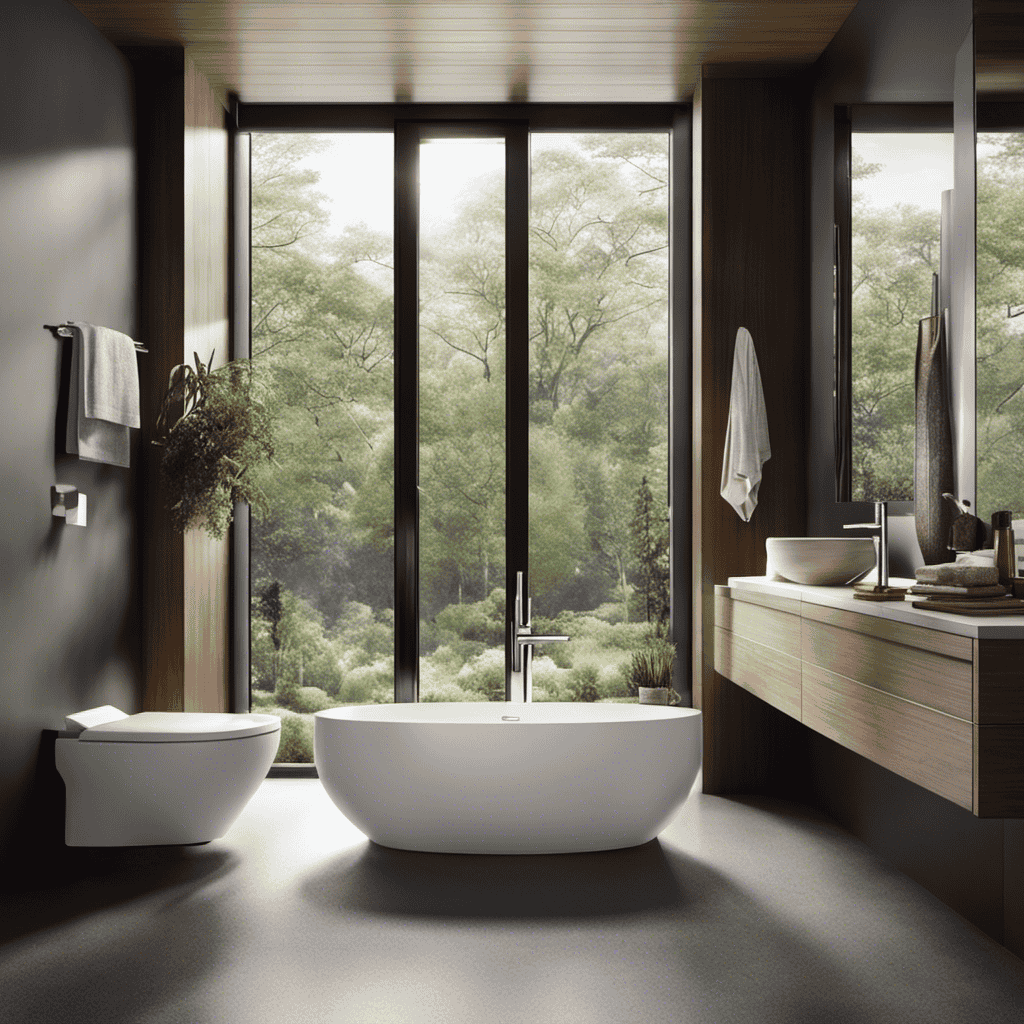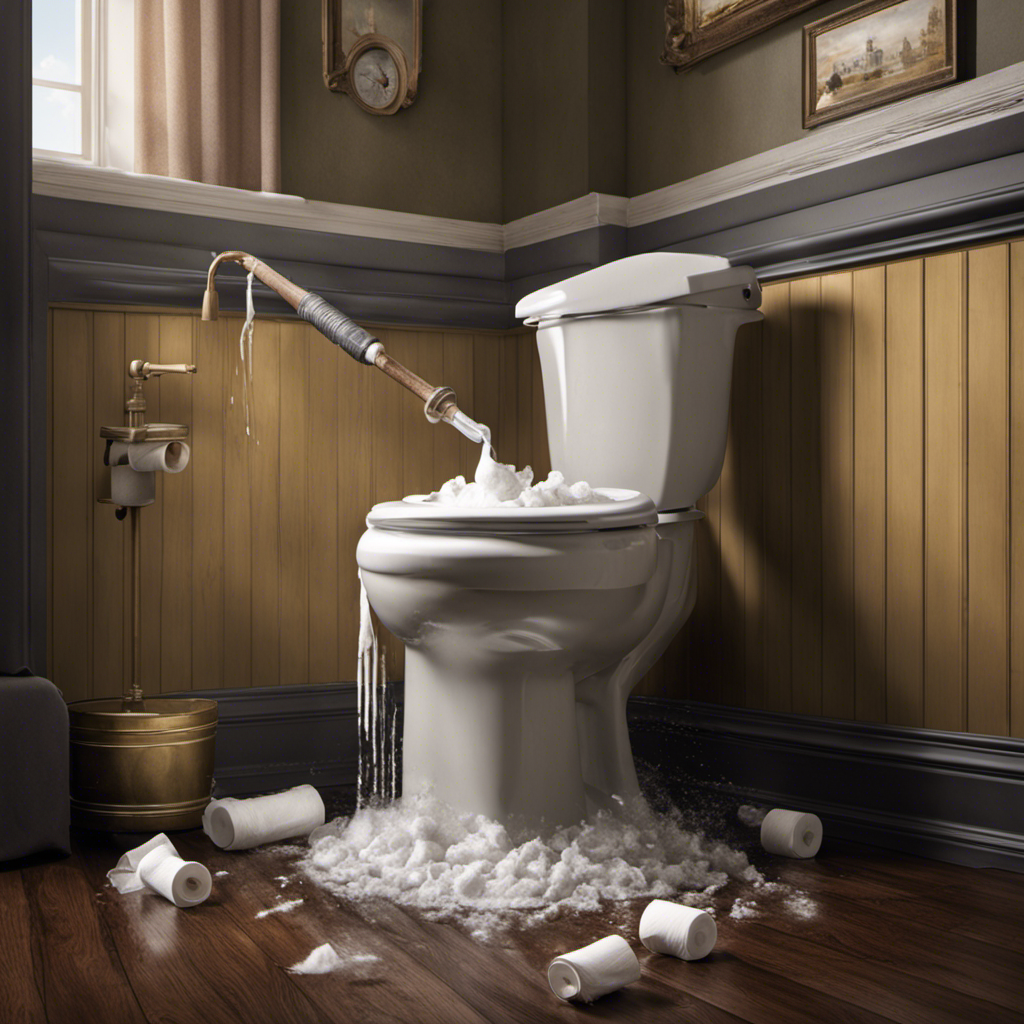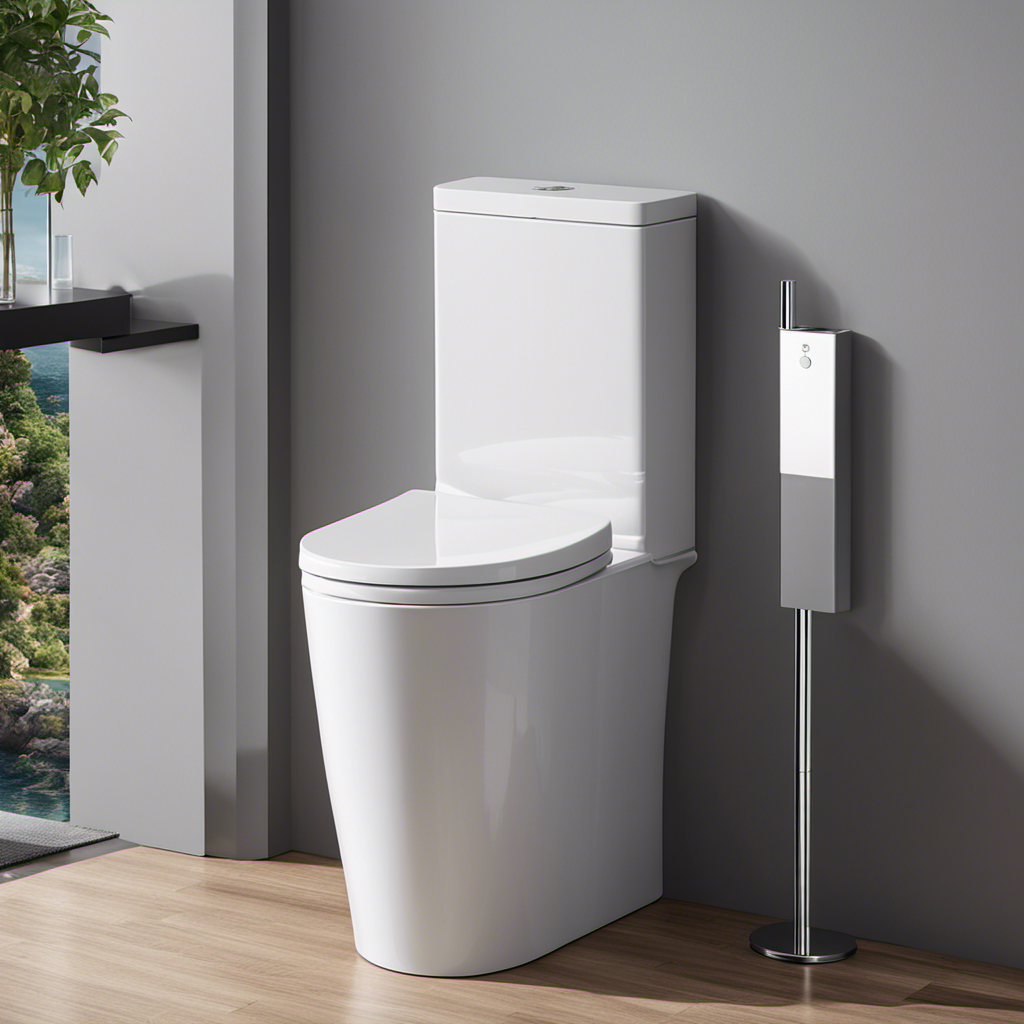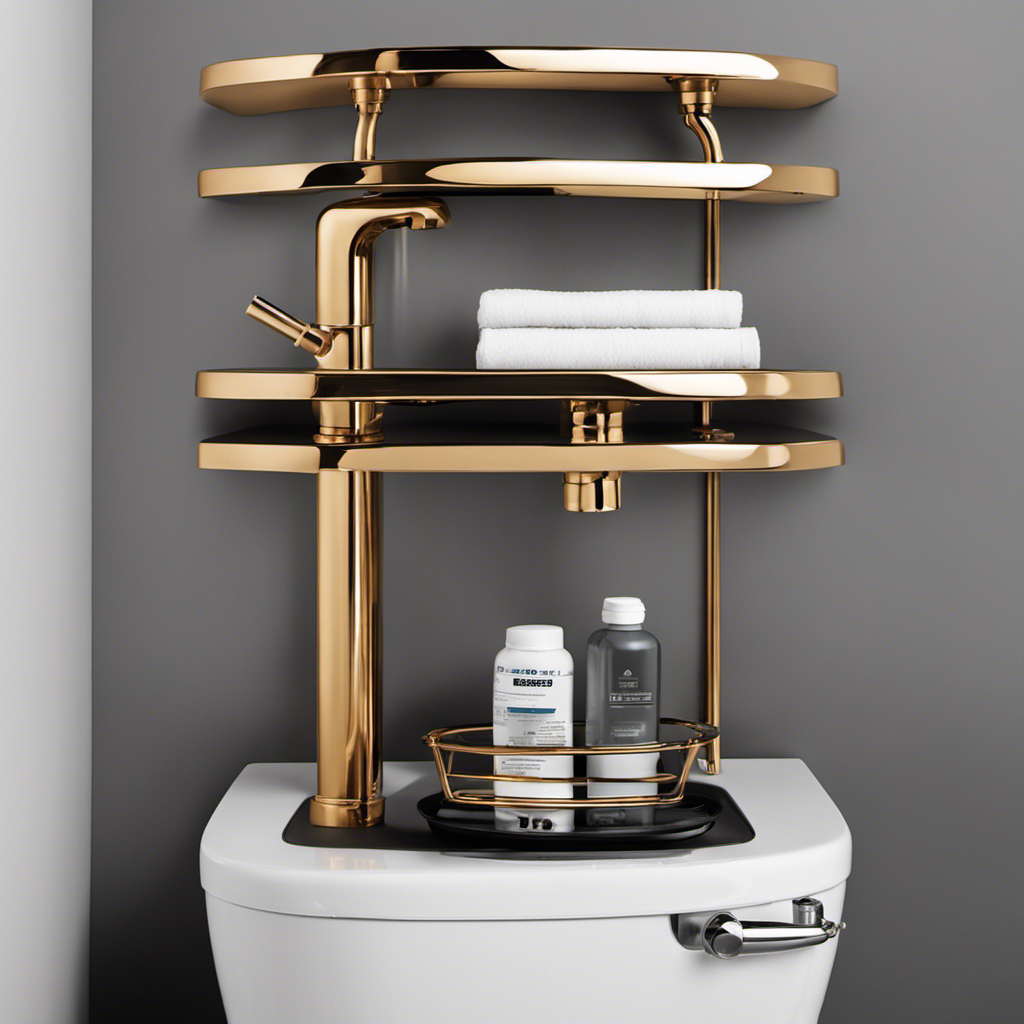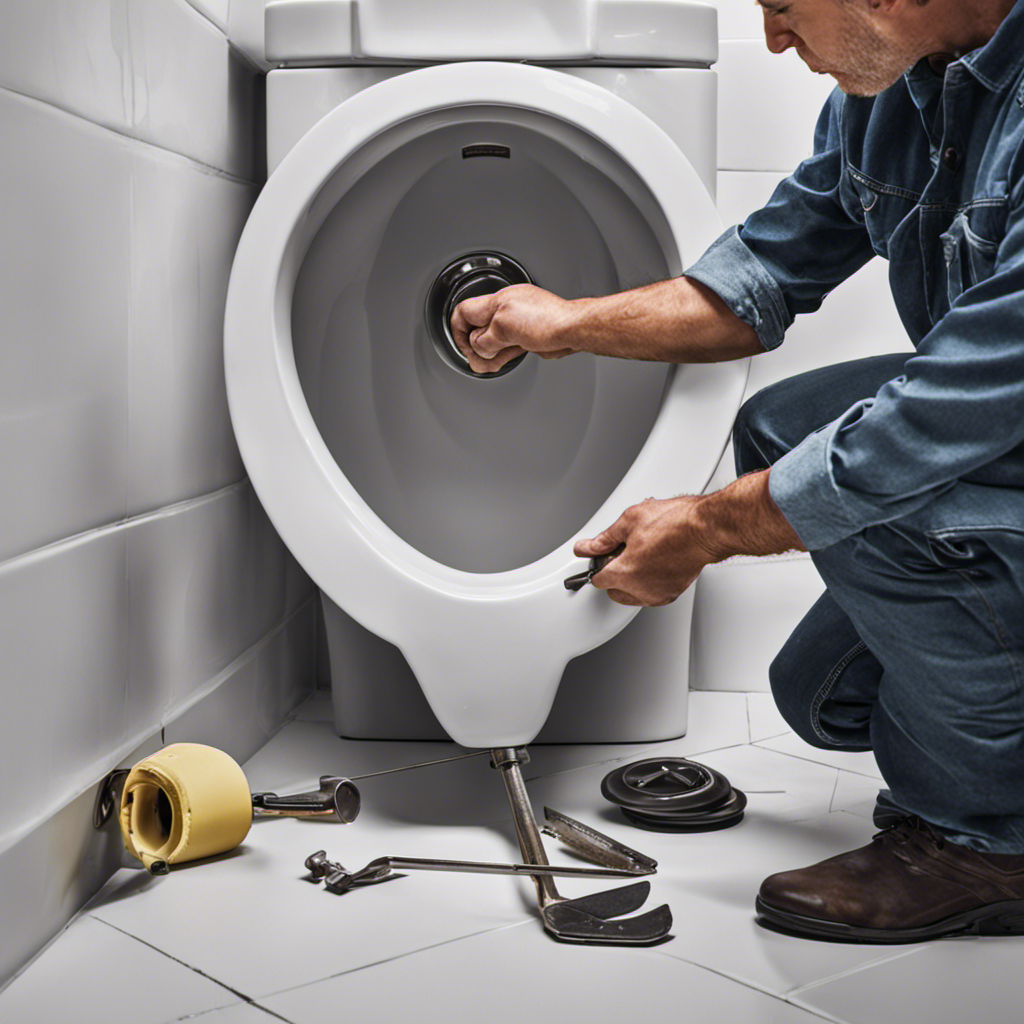As a water-conscious individual, I have discovered a remarkable way to make a significant impact on our environment – mastering the art of toilet water conservation.
By implementing a few simple techniques and adopting a conscious approach, we can reduce water wastage without compromising hygiene.
In this article, I will share valuable tips and insights on observing flushing habits, performing leak tests, and considering eco-friendly alternatives like dual flush systems.
Let’s join forces and be the change our planet desperately needs.
Key Takeaways
- Adopting the ‘If it’s yellow, let it mellow; if it’s brown, flush it down’ approach can reduce overall water usage.
- Installing dual-flush toilets provides an option to use less water for liquid waste.
- Identifying and fixing leaks promptly reduces unnecessary water wastage.
- Dual flush systems offer two options for flushing, reducing water consumption.
Observing Flushing Habits
I’m really interested in observing everyone’s flushing habits. Understanding how often people flush and the amount of water they use can help us find ways to conserve water without compromising hygiene.
According to research, the average person flushes the toilet about 6-8 times a day. However, some individuals tend to flush more frequently, which can result in unnecessary water wastage. By being mindful of our flushing habits, we can make a significant impact on water conservation.
One solution is to adopt the ‘If it’s yellow, let it mellow; if it’s brown, flush it down’ approach. This means only flushing when necessary, reducing the overall water usage. Installing dual-flush toilets can also help by providing an option to use less water for liquid waste.
Performing Leak Tests
Although I’ve already checked for leaks in my toilet, I’m curious to hear about any effective methods others have used to perform leak tests.
Water usage and conservation are important topics that we should all be mindful of. Here are a couple of methods I’ve come across:
-
Dye tablets: Drop a dye tablet into the toilet tank and wait to see if the water in the bowl changes color. If it does, you have a leak.
-
Toilet paper test: Place a few sheets of toilet paper at the back of the bowl. If the paper gets wet without flushing, you likely have a leak.
These methods not only help identify leaks but also contribute to water conservation efforts. By promptly fixing leaks, we can reduce unnecessary water wastage and ensure we’re using this precious resource responsibly.
Let’s work together to conserve water and protect our environment.
Considering a Dual Flush System
Considering a dual flush system for your toilet is a practical and cost-effective water-saving option. With its two flush options, one for liquid waste and one for solid waste, you can significantly reduce your water consumption without sacrificing functionality.
Not only does this system help you save money on your water bill, but it also contributes to a more sustainable future by reducing water wastage and minimizing environmental impact.
Cost-Effective Water-Saving Option
I’ve found that installing a dual flush system can save up to 50% more water compared to traditional toilets. It’s a cost-effective water-saving option that not only benefits the environment but also your wallet.
Here are some key reasons why I believe investing in a dual flush system is a smart choice:
-
Cost Saving Benefits:
-
Reduces water consumption, leading to lower water bills.
-
Long-term cost savings as you use less water over time.
-
Water Saving Techniques:
-
Dual flush systems offer two flushing options, allowing you to choose the appropriate amount of water for each flush.
-
By using less water per flush, you contribute to water conservation efforts and help protect this precious resource.
Installing a dual flush system is a simple yet impactful way to make a difference. By implementing this water-saving technique, you not only save money but also contribute to a more sustainable future.
Environmental Impact and Benefits
Installing a dual flush system saves water and reduces environmental impact. With the increasing concern for water conservation, adopting water-saving methods is crucial. One effective way to contribute to this cause is by installing a dual flush system in our toilets. This innovative system provides two options for flushing, allowing us to choose between a lower volume flush for liquid waste and a higher volume flush for solid waste. By doing so, we can significantly reduce the amount of water being used for each flush. To better understand the impact of this system, let’s take a look at the following table:
| Flush Type | Water Volume (Liters) |
|---|---|
| Liquid | 3-4 |
| Solid | 6-7 |
As seen in the table, a dual flush system can save up to 50% of water compared to traditional toilets. Implementing such water-saving tips and conservation methods in our daily lives is not only beneficial for the environment, but also for future generations. Let’s make a conscious effort to conserve water and protect our planet.
Installing a Toilet Tank Bank
I recently installed a toilet tank bank in my bathroom to maximize water efficiency and reduce my water consumption.
It was a simple and easy installation process, and I was able to complete it in just a few minutes.
With the toilet tank bank in place, I’ve noticed a significant decrease in the amount of water used during each flush, making it a practical solution for conserving water.
Maximize Water Efficiency
By adjusting the flush settings on my toilet, I can easily maximize water efficiency. Water saving techniques and conservation strategies are essential for preserving our precious resources.
Here are some simple yet effective steps you can take to save water:
-
Install a dual flush toilet: This innovative design allows you to choose between a full flush for solid waste and a partial flush for liquid waste, reducing water usage significantly.
-
Fix leaks promptly: A dripping toilet can waste hundreds of gallons of water each day. Regularly check for leaks and repair them immediately to prevent unnecessary water loss.
These water-saving techniques not only help conserve water but also contribute to a sustainable future. By implementing these strategies, we can all play a part in protecting our environment and serving others by ensuring water availability for future generations.
Reduce Water Consumption
One simple way to reduce water consumption is by using a toilet tank bank, which can save up to 0.8 gallons of water per flush.
In today’s world where water scarcity is becoming a major concern, it’s crucial to adopt water-saving technologies and implement water-saving tips in our daily lives. By installing a toilet tank bank, you can significantly reduce the amount of water used for each flush, ultimately conserving water and contributing to a more sustainable future.
These tank banks are easy to install and require minimal effort. By taking this small step, you aren’t only saving water but also reducing your water bills and minimizing your environmental impact.
Let’s explore the easy installation steps to get started on your water-saving journey.
Easy Installation Steps
After purchasing a toilet tank bank, simply remove the toilet tank lid and place the bank inside, ensuring that it’s securely attached and functioning properly.
This easy installation step allows for efficient water usage and promotes water conservation.
Adjusting water flow and optimizing water pressure are key factors in conserving water while maintaining a functional toilet system.
By adjusting the water flow, you can minimize the amount of water used per flush, saving both water and money. Water pressure optimization ensures that the toilet flushes effectively without wasting excessive water.
These simple adjustments not only contribute to a greener environment but also help reduce water bills.
Adjusting the Fill Valve
While I’m adjusting the fill valve, I can ensure that my toilet is using water efficiently. Maximizing efficiency and implementing water-saving techniques are crucial in today’s world where sustainability is key. By making simple adjustments to our toilets, we can significantly reduce water consumption and contribute to a greener environment.
One effective way to conserve water is by adjusting the fill valve. This valve controls the water level in the tank and can be adjusted to minimize water wastage. By lowering the water level, we can save gallons of water with each flush.
To help you understand the impact of adjusting the fill valve, here’s a comparison table illustrating the potential water savings:
| Before Adjustment | After Adjustment | Water Saved per Flush |
|---|---|---|
| 3.5 gallons | 2.5 gallons | 1 gallon |
| 2.8 gallons | 1.8 gallons | 1 gallon |
| 4.2 gallons | 3.2 gallons | 1 gallon |
| 3.1 gallons | 2.1 gallons | 1 gallon |
| 2.6 gallons | 1.6 gallons | 1 gallon |
As you can see, a simple adjustment to the fill valve can save up to 1 gallon of water per flush. Imagine the impact if everyone adopted this water-saving technique! Let’s do our part in conserving water and promoting sustainability.
Maintaining the Flapper
I regularly check the flapper to ensure it’s functioning properly and preventing any water leaks. Flapper maintenance is crucial for water-saving techniques in our toilets. By taking care of the flapper, we can contribute to conserving water, a precious resource.
Here are two important reasons why flapper maintenance is essential:
-
Preventing water waste: A faulty flapper can cause continuous water leakage, resulting in wasted gallons of water every day. Regularly inspecting and replacing the flapper can help avoid this wastage, saving both water and money.
-
Environmental impact: Conserving water isn’t only beneficial for our pockets, but also for the environment. By properly maintaining the flapper, we can reduce our water consumption, minimizing the strain on local water sources and ecosystems.
Practicing Proper Hygiene
Using an ample amount of soap while washing hands is crucial for practicing proper hygiene. It’s essential to thoroughly wash our hands with soap and water for at least 20 seconds, especially during these times when we face the threat of infectious diseases. Proper handwashing not only helps prevent the spread of germs but also protects us and those around us from illness.
Additionally, it’s important to consider our toilet paper usage. By using only what’s necessary, we can reduce waste and contribute to environmental conservation. Choosing sustainable and biodegradable toilet paper options can also make a positive impact.
Let’s prioritize proper handwashing and conscientious toilet paper usage to promote good hygiene practices and protect our health and the environment.
Frequently Asked Questions
Can I Use Any Type of Toilet Paper When Practicing Water Conservation?
Yes, you can use different types of toilet paper when practicing water conservation.
However, if you’re looking for alternatives, there are options like eco-friendly toilet paper made from recycled materials or bamboo.
Additionally, using bidets can significantly reduce toilet paper usage, as they provide a more hygienic and efficient cleaning method. They also have the added benefit of reducing environmental waste.
Is It Safe to Use Toilet Bowl Cleaners With Bleach in a Water-Efficient Toilet?
Using toilet bowl cleaners with bleach in a water-efficient toilet raises concerns about toxicity. While bleach is effective at killing germs and removing stains, it can be harmful to the environment and your health.
Luckily, there are alternative cleaning options available that are safer and still effective. Look for environmentally-friendly toilet bowl cleaners or try using natural solutions like vinegar and baking soda.
These options will help you maintain a clean toilet while also protecting the planet and your well-being.
How Often Should I Perform Leak Tests to Ensure Optimal Water Conservation?
Performing regular leak tests is essential for optimal water conservation. By detecting and fixing leaks in your toilet, you can prevent water wastage and save money on your water bill.
To ensure efficient water usage, it’s recommended to perform leak tests at least once every six months. Additionally, adopting water-saving tips such as using a dual-flush toilet, installing a low-flow showerhead, and only flushing when necessary can further contribute to conserving water in your home.
Are There Any Specific Brands of Toilet Tank Banks That Are Recommended for Installation?
Sure, I can answer that!
When it comes to toilet tank banks, there are a few brands that are highly recommended for installation. These nifty devices help conserve water by reducing the amount used in each flush.
Some popular brands include Fluidmaster, Niagara Conservation, and HydroRight. Not only do these tank banks save water, but they also help lower your water bills.
Can I Adjust the Fill Valve to Increase Water Flow if Needed, or Will It Affect Water Conservation Efforts?
I can adjust the fill valve to increase water flow if needed, but it may affect water conservation efforts.
It’s important to find a balance between water flow and conservation. By adjusting the fill valve, you can increase the amount of water that fills the tank after each flush. However, keep in mind that this will use more water and may counteract your conservation efforts.
It’s best to consult a professional or do further research to find the optimal water flow for your toilet.
Conclusion
In conclusion, by mastering the art of toilet water conservation, we can make a significant impact on our environment and save money on water bills.
Just like a skilled artist carefully crafts their masterpiece, we can observe our flushing habits, perform leak tests, consider dual flush systems, install toilet tank banks, adjust fill valves, and maintain the flapper.
By practicing these simple steps, we can contribute to a greener world and ensure a more sustainable future for generations to come.
